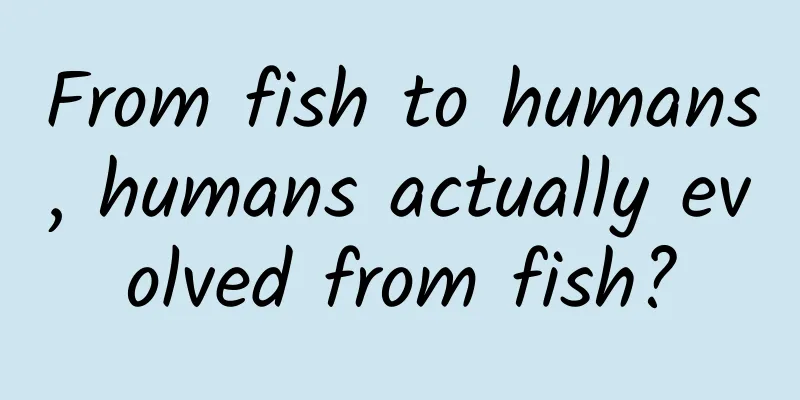Beef belly hotpot, monkey dung olives... the behavioral patterns of species are more colorful than we think

|
Calendar Girl Asks Which of the following is a human behavior? A. Picking olives from monkey shit B. Beef tripe cooked in hot pot C. Soak sweet potatoes in sea water D. Fishing for termites with a stick I was born in Beijing. My mother is from Jiangsu and Zhejiang. I have always been a foodie from both north and south. I eat everything from sweet and salty rice dumplings to five-nut mooncakes. But when I went to Guangzhou to study for my undergraduate degree, I was still shocked by the richness and diversity of human eating habits. "Ah? This egg custard is as sweet as pudding?" "What? Green mango can be eaten cold?" "What? You can put kelp in mung bean soup?" Mung bean and kelp soup, rare in the north | wenhuaReichel / douguo However, once you accept these settings, you will eventually say "It smells so good" and treat your southern classmates with soy milk and fried tripe when you get home. After all, from roasted silkworm pupae to snail noodles, the human brain circuit about eating is sometimes really outrageous. Humans are not the only ones with drastic differences in eating habits among their own species. Some bonobos (Pan paniscus) have a unique way of eating that can shock their fellows living in other areas, because these bonobos eat feces. If you can’t digest it in one go, digest it again! In the forests of LuiKotale in the Democratic Republic of Congo, a group of bonobos carefully poke through a pile of shit, picking out undigested black fruit, expertly removing the seeds and eating the flesh that just passed through their intestines. The reason why they eat fruits from feces can be traced back to what they eat. Many bonobos like to eat the fruits of African olives (Canarium schweinfurthii). This kind of olive fruit is rich in fat and protein and is a good source of nutrition. But the only drawback is that their thick flesh contains a lot of tannins (like astringent persimmons). This kind of substance makes food taste bitter and also combines with protein and iron to hinder digestion. In most areas, bonobos will bite the fruit and spit out the seeds when eating, so that the flesh can fully contact the tannin-binding protein in the saliva, reducing the obstruction to digestion. The fruit of the African olive, also a favorite snack for locals | Minette Lontsie / Wikimedia Commons However, the bonobos at Luikotala were particularly stubborn. They swallowed the 3-cm-long fruit without even chewing it, let alone spitting out the seeds. The next day, the bonobos began to collectively poke their feces and find the whole fruit from their own feces to eat again. Human researchers who observed this phenomenon speculated that compared with fresh fruit, digested fruit is softer and easier to remove the seeds, which improves eating efficiency; at the same time, tannins are also broken down in the digestive tract, making the fruit easier to digest when eaten again. I wonder if the bonobos in other regions who chew African olives slowly will look disgusted when they see this scene, or suddenly realize and join the ranks of poking poop. But in the local area, this behavior is passed down from generation to generation - young bonobos still in their mothers' arms will observe and imitate their mothers poking poop; when they grow up a little bit, they will understand that if they have eaten olives, they can find ape dung olives the next day. Bonobos: Ouch… Repeatedly spitting out the chewed, sticky mess also allows saliva to fully contact the food, neutralizing the tannins [1]. Bonobos do this when eating other tannin-rich fruits. | LuiKotale, DR Congo. D Beaune / MPI LKBP. An unknown little monkey becomes a world-renowned gourmet Passing down the tradition of eating feces to future generations is indeed a bit extreme, but local customs such as "only the bonobos in Luikotala eat feces" also occur in other species. More than 60 years before the bonobos were observed eating feces, people began to notice that culture might not be unique to humans. In the 1950s, the scientist Kinji Imanishi, known as the "father of Japanese primatology," proposed a broad definition of "culture": behavioral patterns that are transmitted through social relationships rather than genetics. Faced with similar environments, animals of the same species have different behaviors, which are transmitted through social relationships among relatives and even non-blood-related partners. Such behavior has nothing to do with genes, but can be spread in a population, which can be considered culture in a broad sense. When Imanishi Kinji proposed this idea, primate research in Japan had just begun, and Koshima Island in southern Japan was one of the earliest research bases. In order to observe Japanese macaques (Macaca fuscata) up close, researchers began to place sweet potatoes near the mountain roads on the island to lure the monkeys to open areas that were easy to observe. The beach of Koshima Island is still an important research site for Japanese macaques. | Photo provided by the author After more than a year of feeding, the monkeys, who originally only ate plants in the forest, had become accustomed to staying on the beach every day and enjoying the food provided by humans. One year later, in September 1953, for some reason, a one-and-a-half-year-old female monkey, Imo, picked up a sweet potato on the beach but did not eat it. Instead, she went to the stream beside the beach and washed off the sand with water before eating it. This discovery shocked the researchers, after all, no monkey had ever lived so delicately before. But unexpectedly, after a few years, most monkeys became delicate. The first monkeys who learned to wash sweet potatoes were the monkeys of the same age who often stayed with Yi Mo, followed by the mothers of these monkeys, and eventually most of the monkeys in the monkey group could wash sweet potatoes. The monkeys born after that, naturally, became delicate monkeys who knew how to wash sweet potatoes because of what they saw and heard from childhood. Japanese macaque washing sweet potatoes in water | References [4] Yimo, who was at the forefront of the trend, did not stop her innovation in eating. Three years later, she invented washing wheat grains. Originally, monkeys could only pick up wheat grains scattered on the beach one by one and eat them. Yimo suddenly had an idea. She grabbed a handful of wheat grains and sand, and then scattered them into the water. She used the difference in buoyancy to separate the sand from the wheat grains, and ate a full handful at a time. Like washing sweet potatoes, running wheat grains gradually became a popular way of eating among monkeys. Although some Japanese macaques living in other areas also wash sweet potatoes, they have not spread the habit to other monkeys around them; and the behavior of washing wheat grains was invented and developed only by monkeys on Koshima Island. Professor Masao Kawai, who was observing monkeys on Koshima Island at the time, called these behaviors "pre-cultural behaviors" and made detailed records and descriptions of their forms and spread, which attracted the attention of other researchers to animal cultural behaviors. 100 Ways to Eat Termites While Yimo became a benchmark for the Japanese macaque restaurant industry in Koshima, research on chimpanzees also revealed many complex behaviors that were beyond people's imagination at the time. As humans' closest relatives in nature, they have become the protagonists of animal cultural behavior research and have demonstrated amazing cultural diversity. In 1960, Jane Goodall first documented chimpanzees using grass stems to catch termites in Gombe, Tanzania, which changed the way humans think about themselves. When her mentor Louis Leakey heard about her discovery, he responded, "Ah! Now we either have to redefine humans or tools, or we have to admit that chimpanzees are humans!" Later studies found that chimpanzees in different regions use different tools to eat termites. The chimpanzees in Gombe are accustomed to using grass leaves and bark as fishing rods, sticking them into termite nests, waiting for the termites to bite the fishing rods, and then pulling them out and eating them in one bite. In Assirik, Senegal, their compatriots like to use branches and the midribs of leaves as fishing rods. The chimpanzees in Central Africa are much simpler and cruder, using tools to directly make holes in termite nests. Chimpanzees in the Goualougo Delta of the Congo use sticks to make holes in termite nests and also use sticks to reach into the openings of termites to fish for termites. [8] In Mahale, Tanzania, chimpanzees not only eat termites, but also use tools to catch camponotus sp. ants in tree trunks. Although these ants can be found everywhere, they are only a local specialty. Chimpanzees in many other areas are not interested in them. Perhaps just like some people cannot accept fried bamboo worms, grilled scorpions, and cold fish mint, not all chimpanzees can accept sour ants. Scientists have also found that chimpanzees in Mahale will lick the bark of a medicinal plant (Brachystegia bussei) after eating ants, which may be to offset the pungent taste of ants. The chimpanzees' observation and learning at a young age have allowed these different eating habits to be passed down from generation to generation in the local chimpanzee group. When fishing for termites, chimpanzee mothers are very tolerant of the little chimpanzees who make trouble nearby. Whether the little ones observe or reach out to grab the tools, they will not be driven away. A baby chimpanzee disturbs his mother while she is fishing for termites | References [5] Just as human cultural differences are not limited to diet, primate cultural behaviors are not limited to eating. In Africa, there are also regional differences in chimpanzee behaviors such as dancing in the rain, tapping tree trunks, and high-fiving with companions. Many of these differences cannot be explained by "adapting to a specific environment" and are likely to be regional characteristics of chimpanzees in different places. In addition to washing sweet potatoes and wheat grains, the Japanese macaque group on Koshima Island also has popular behaviors such as sea bathing and begging for food from humans with gestures that are not seen in other regions. The Japanese macaques on Koshima Island originally had no habit of bathing in the sea, but after a few teenagers tried it in 1959, most of the young monkeys learned to bathe in the sea within three years. | References [4] Comparison of cultural behaviors of chimpanzees in different regions | References [9] Some people like beef belly hot pot, while some bonobos like ape dung olives. Whether humans or animals, there are some specific behavioral patterns that spread among partners, passed down from generation to generation, and eventually become unique traditions of each group, splicing into a colorful culture. These cultural behaviors constantly remind us that animals do not just act according to the instincts engraved in their DNA. The natural world is more complex and colorful than we once thought, and we humans have just gone a little further in this direction. References [1] Beaune, D., Hohmann, G., Serckx, A., Sakamaki, T., Narat, V., & Fruth, B. (2017). How bonobo communities deal with tannin rich fruits: Re-ingestion and other feeding processes. Behavioral Processes, 142, 131–137. https://doi.org/10.1016/j.beproc.2017.06.007 [2]Fischer, J. (2008). 1.16—Transmission of acquired information in nonhuman primates. In JH Byrne (Ed.), Learning and Memory: A Comprehensive Reference (pp. 299–313). Academic Press. https://doi.org/10.1016/B978-012370509-9.00055-3; https://web.archive.org/web/20210912062327/https://www.sciencedirect.com/science/article/pii/B9780123705099000553 [3]Huffman, MA (1996). Chapter 13 - Acquisition of innovative cultural behaviors in nonhuman primates: A case study of stone handling, a socially transmitted behavior in Japanese macaques. In CM Heyes & BG Galef (Eds.), Social Learning in Animals (pp. 267–289). Academic Press. https://doi.org/10.1016/B978-012273965-1/50014-5; https://web.archive.org/web/20210912062030/https://www.sciencedirect.com/science/article/pii/B9780122739651500145 [4]Kawai, M. (1965). Newly-acquired pre-cultural behavior of the natural troop of Japanese monkeys on Koshima islet. Primates, 6(1), 1–30. https://doi.org/10.1007/BF01794457 [5]Lonsdorf, EV (2006). What is the role of mothers in the acquisition of termite-fishing behaviors in wild chimpanzees (Pan troglodytes schweinfurthii)? Animal Cognition, 9(1), 36–46. https://doi.org/10.1007/s10071-005-0002-7 [6]McGrew, WC (2004). The cultured chimpanzee: Reflections on cultural primatology. Cambridge University Press. https://doi.org/10.1017/CBO9780511617355; https://web.archive.org/web/20210921114306/https://www.cambridge.org/core/books/cultured-chimpanzee/4D390162207E153AA60812EC9746C549 [7]Nishida, T. (1973). The ant-gathering behavior by the use of tools among wild chimpanzees of the Mahali Mountains. Journal of Human Evolution, 2(5), 357–370. https://doi.org/10.1016/0047-2484(73)90016-X [8]Sanz, C., Morgan, D., & Gulick, S. (2004). New insights into chimpanzees, tools, and termites from the Congo Basin. The American Naturalist, 164(5), 567–581. https://doi.org/10.1086/424803 [9]Whiten, A., Goodall, J., McGrew, WC, Nishida, T., Reynolds, V., Sugiyama, Y., Tutin, CEG, Wrangham, RW, & Boesch, C. (1999). Cultures in chimpanzees. Nature, 399(6737), 682–685. https://doi.org/10.1038/21415 Author: Walnut seedlings Editor: Mai Mai This article comes from the Species Calendar, welcome to forward If you need to reprint, please contact [email protected] |
<<: Mr. Xin and Mr. Ling's "Healthy Meta-Universe"
>>: 19 dead, 63 injured! Just because of an electric heater! How to use heating equipment safely?
Recommend
Super practical event planning and promotion methodology!
Event planning is one of the basic operational ca...
Electric Technology Car News: Giving up 7 seats to attract young people, Vision X1 is only priced at 40,000 yuan, which beats Baojun 310 in seconds
SUV, automatic transmission, cruise control, pano...
Struggling domestic operating systems
How many Chinese companies are developing domesti...
The latest research! This exercise can delay brain aging and improve memory! Stick to it for 6 months and your brain will benefit for at least 5 years
Have you ever had a similar feeling: As I get old...
iPhone hidden function exposed: can save lives at critical moments
Yesterday, Federal Communications Commission (FCC...
I was eating melons and my research project was wrong! I quickly wrote an article to refute it...
Some time ago, when I was surfing the Internet, I...
What specific services does server hosting provide?
With the development of the Internet today, many ...
3 key points to discuss the strategy of hot-selling products
There are a wide variety of products today, and t...
2 major directions + 5 capabilities + 7 strategies, SEM promotion effect is doubled!
Introduction: The promotion effect is abnormal, t...
Why can English become the only scientific language? |
In the 19th century, there were many languages ...
The new traffic code for Xiaohongshu promotion in 2022
Hot articles are the floodgates that open the tra...
Guangzhou coffee shop mini program function, how much does it cost to develop a coffee shop WeChat mini program?
Coffee is a symbol of refined life. The developmen...
The 5 most profitable ways to monetize Douyin live streaming
The sweet-looking and high-quality dance video of...
With a pot of water and two steamed buns, he went from being a geologist to the "Father of Chang'e"
"Huanyu Wentian pays tribute to Chinese astr...
Breakthrough in customer acquisition for small and medium-sized enterprises: Private domain traffic methodology
Recently, in many offline retail stores and onlin...









